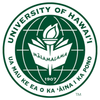Presented on April 18, 2024, by
Dr. John J. Braun
UCAR/COSMIC
ABSTRACT
Global Navigation Satellite System Radio Occultation (GNSS-RO) is an emerging technology for remotely sensing the Earth’s stratosphere and stratosphere. GNSS-RO missions began in the mid-90s through a proof of concept mission called GPS-Met, with an increase in GNSS-RO atmospheric profiles through the past two decades. GNSS-RO systems now provide more than 10,000 profiles each day for operational and research purposes. This presentation summarizes the ability of GNSS-RO to resolve interannual variability of tropospheric moisture. This includes an analysis of El Nino-Southern Oscillation (ENSO) structure from 2007 through 2019 using the FORMOSAT-3/COSMIC-1 mission and follows with the ability of the FORMOSAT-7/COSMIC-2 mission to resolve tropical and subtropical moisture variability since 2019.
BIO
Dr. Braun is the Deputy Director of the COSMIC program at UCAR where he serves as the leader of the science applications group. He has previously served as a project scientist and program manager, this includes leading Satellite Systems Development in the COSMIC Program at UCAR. His research interests are focused on using GNSS signals to remotely sense the Earth and its atmosphere. He was the UCAR Principal Investigator for the Continuously Operating Caribbean Observational Network (COCONet). He is a co-recipient of the Creativity Prize for the 6th Award of the International Prize for Water and 2017 Colorado Governor’s Award for High Impact Research.

